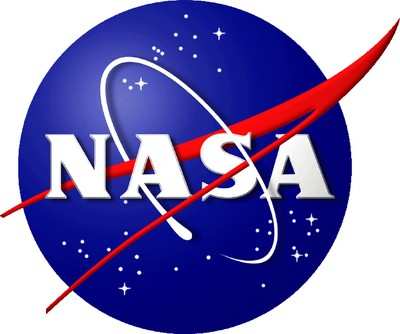Sun, Mar 11, 2018
Grants Will Be Used For Tech Research, Development
NASA has selected 128 proposals from American small businesses to advance research and technology in Phase II of its 2017 Small Business Innovation Research (SBIR) program. These selections support NASA's future space exploration missions, while also benefiting the U.S. economy.

"We look forward to working with these promising small businesses to further advance NASA’s missions," said Jim Reuter, acting associate administrator for NASA’s Space Technology Mission Directorate (STMD). “NASA is proud of our investment in the success of small businesses and its long-term impact on our economy.”
Proposals were selected according to their technical merit and feasibility, in addition to the experience, qualifications and facilities of the submitting organization. Additional criteria included effectiveness of the work plan and commercial potential.
The selected proposals will support the development of technologies in the areas of aeronautics, human space exploration and operations, science and space technology. Awards cover a breadth of research and development needs, such as:
- Low-power, ultra-fast, deep-learning neuromorphic computer chips designed for unmanned aircraft systems, such as delivery drones. Neuromorphic computer chips can analyze, in real-time, big data streams coming from cameras, sensors and avionics, helping to achieve better navigation and collision avoidance.
- Solid-state oxygen concentrator and compressor designed to minimize hardware mass, volume and power footprint, while still performing at the required capabilities. This technology concentrates the oxygen within future crewed space environments, providing the required concentration of oxygen to crew members, while minimizing weight.
- Sensors and camera for detecting and tracking near-Earth asteroids, to help scientists detect, count and track near-Earth asteroids. These asteroids are mostly dark, small and cold and are best detected in the very long-wave infrared wavelengths greater than 12 microns, where they glow brightest.
- New wheel concept for enhanced surface mobility to emulate the behavior of a variable pressure tire without the need or risk of an inflation system. This wheel can benefit future NASA planetary exploration missions to the Moon and Mars by enhancing the mobility and controllability of surface exploration rovers and future vehicles.
- Only small businesses awarded a Phase I contract are eligible to submit a proposal for a Phase II funding agreement. Phase II is focused on the development, demonstration and delivery of the innovation. Phase II projects are chosen as a result of competitive evaluations and based on selection criteria provided in the Solicitation. Phase II contracts last for 24 months with a maximum funding of $750,000.

Phase I work and results provide a sound basis for the continued development, demonstration and delivery of the proposed innovation in Phase II and follow-on efforts. Phase III is the commercialization of innovative technologies, products, and services resulting from either a Phase I or Phase II contract.
Small businesses have created approximately 55 percent of all jobs in the United States since the 1970s. The SBIR and Small Business Technology Transfer (STTR) programs encourage small businesses and research institutions to develop innovative ideas that meet the specific research and development needs of the federal government. The programs are intended to stimulate technological innovation in the private sector, increase the commercial application of research results, and encourage participation of socially and economically disadvantaged persons and women-owned small businesses.
(Image provided with NASA news release)
More News
How To Get A Story On Aero-TV News/Feature Programming How do I submit a story idea or lead to Aero-TV? If you would like to submit a story idea or lead, please contact Jim Campbel>[...]
“As the excitement builds for the world of flight returning to Oshkosh in 2026, we wanted to ensure that advance tickets are available for those who enjoy giving AirVenture t>[...]
North Atlantic High Level Airspace (NAT HLA) That volume of airspace (as defined in ICAO Document 7030) between FL 285 and FL 420 within the Oceanic Control Areas of Bodo Oceanic, >[...]
Also: Cosmonaut Kicked Out, Airbus Scales Back, AF Silver Star, Russian A-60 Clobbered A Samaritan’s Purse humanitarian flight was hijacked on Tuesday, December 2, while atte>[...]
Also: IAE Acquires Diamond Trainers, Army Drones, FedEx Pilots Warning, DA62 MPP To Dresden Tech Uni The danger to the flight training industry and our future pilots is clear. Dona>[...]
 ANN FAQ: Contributing To Aero-TV
ANN FAQ: Contributing To Aero-TV Aero-News: Quote of the Day (12.10.25)
Aero-News: Quote of the Day (12.10.25) ANN's Daily Aero-Term (12.10.25): North Atlantic High Level Airspace (NAT HLA)
ANN's Daily Aero-Term (12.10.25): North Atlantic High Level Airspace (NAT HLA) Airborne 12.08.25: Samaritans Purse Hijack, FAA Med Relief, China Rocket Fail
Airborne 12.08.25: Samaritans Purse Hijack, FAA Med Relief, China Rocket Fail Airborne-Flight Training 12.04.25: Ldg Fee Danger, Av Mental Health, PC-7 MKX
Airborne-Flight Training 12.04.25: Ldg Fee Danger, Av Mental Health, PC-7 MKX




